
I’ve got a new pair of Nike Lunar racers and promised to write a review of it. So here goes, the first part with my first impressions.
The first thing you can do is to pick up this pair of shoes and wonder what the? It weighs too light to feel real, it feels even lighter when worn. Just like a new subject of scrutiny in front of a panel, there are many perspective one can view the Lunar racer from. A conservative may call it “bombastic”, “shouty” or “bold” while accountants and economist can may remark that Nike had taken out all the equipment and jacked up the price. Either way, you can’t deny that the shoe is simply stunning at first glance, and that is not just the full story yet.
Flywire explained
So being an engineer myself, let take alook at it from an engineering point of view. The shoe is very solid built, yet very flexible. Employing Flywire technology in the shoe’s upper, one can simply go “Mmmm this looks just like a suspension bridge”. True enough the shoes does indeed works like cables on a suspension bridge, providing precisely engineered support for the foot. Just like the bare necessity of cables strung on a bridge, the Flywire filaments, made of a strong fibre called Vectram are placed only where support is required, anchoring the sole of the shoe to the lace hoops and a secondary Flywire for the runner’s heel area. This minimalist design does what a fully padded shoe is able to do, without the extra materials, allowing a great shedding of materials, which in turn equals reduction of overall weight.
Indeed, Flywire technology gained instant notoriety on the track scene during the Osaka 2007 World Track & Field Championships, where team USA middle distance runners, both medaled with Zoom Victory Spike. Thanks to this innovation, track spikes with Flywire now easily come in the under 100g category, a weight never before achieved by Nike without compromising durability, integrity or support. This racer is no different either.
Applying the innovation to distance running was the next natural choice, giving birth to the lunar racer. This Lunar racer weighs in at about 160g per shoe for a US size 10, nearly 4 about 100g lighter than my current racer and I can say in it’s league, one of the lightest racer footwear available on the market today. If Nike is not breaking aiding the breaking of Olympics records, it’s engineering records they are breaking here as well.
Lunarlite, we’ve got cushioning!
Lightweight and very responsive are two qualities which usually never go on the same sentence. The same however, can be said for the Lunar Racer with respect to cushioning. This is largely attributed to the Lunarlite foam ported for footwear use which has it’s roots from NASA’s space shuttles.
Lunarlite foam distributes the pressure patterns and spreads pressure loads more evenly across the foot to help protect it from pain, injury and reducing impact on bones. Moreover Lunarlite foam’s “pillow-like” softness was claimed to reduce energy in the midsole, requiring lesser energy to take successive strides and allows the conservation of energy from pounding making runner’s feel less beat up- all important for distance events.
The Lunarlite foam is said to be the next biggest achievement Nike had made since Bill Bowerman’s invention of the original Waffle sole, also know as the revolutionary “Moon Shoe” (which in turn gave birth to the “Waffle Racer”) in 1974. Designed by Nike’s Kevin Hoffer, this new cushioning system is a successor worthy to the waffle, yet faithful to it’s roots with a rather similar planetary naming convention to it’s older sibling.
Initial run impressions
So with all the hype lets, the real test is of course taking the shoe out into the wild for a short preliminary 10km run and see whether it lives up to it’s name. Though, yes, I can hear you say that this is a racer, not a trainer, but since the racer and trainer spot the same sole piece, only with a different upper, it’s a good way to test and gauge the effective cushioning it offers for longer runs.
My initial runs were rather enjoyable. Ventilation was sufficient and my feet didn’t stink nor sweaty even after the run with cotton socks. However, past the 7km mark, I can feel increasing soreness on the sides my big toe and my small toe. There are noticeable skin abrasions and soreness on these areas on my toes upon inspection after the run. I can give it that the shoes are not burnt in yet and gait changes for the new shoe. It will take sometime before I can come to a conclusion for the small toebox size.
My feet spots a normal (medium) arch with mild to neutral pronation. The shoe itself corrects the pronation so you can ensure even landing of your feet for optimal wearing and support. If your feet is really on the wide size, I will recommend getting half a size larger than your standard foot size. For now, knowing my threshold my in this setup, my guess is that if I were to take this out for a long run, from experiences, I believe my feet will start blistering past the 25km mark. But after all, yes this is a racer, so the optimal employment for this shoe will be short to middle distances, where the shoe can really shine without the frills.
Running over a varying degree of terrain such as concrete, tarmac and gravel. The shoe do take off quite alot of the pounding of my feet. Cushioning is good and relatively good and responsive, particularly the midsole. There is no fancy mix of sole parts here, just continuous piece of lunarlite foam from tip to heel, which is simply good in term of durability and I am glad Nike is pulling in this direction- from my experience with older Nike shoes, fancy sole parts always tend to tear off prematurely which severely impacts a shoe’s lifespan.
I am impressed that I do not fatigue as early as I expected to do on this pair of shoes. I will be also be very interested to find out how much mileage the shoe can take before the cushioning effectiveness starts to drop. Though I think it won’t hold (or fair enough to compare it) to my Mizuno Wave Creation 8, the Lunar racer does provide very good cushioning for a shoe in it’s class and weight category.
I will be putting the shoes for more test runs, particularly speed work tests round a track where I think this shoe will truly shine. That to, having to break in the shoe and eliminate all the other variables before putting a firm recommendation on the shoe. Stay tuned for the second part of this review.
(You are currently viewing page 1/2)
- Page 1/2 » Nike Lunarlite Flywire Racer+ Review- First Impressions
- Page 2/2 » Nike Lunarlite Flywire Racer+ Review – Verdict

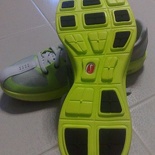
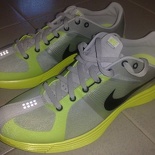
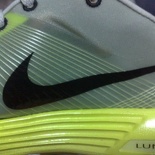
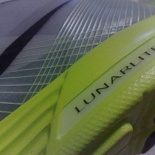
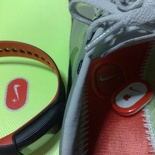
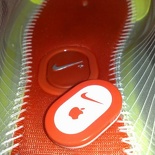
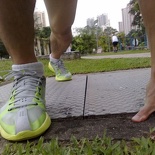
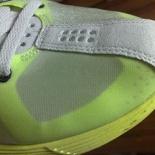
hi shawn,
check wif u uh… that lunar shoe.. do u think its recommended for people wif high arch feet?
For high arch, no, this shoe is not recommended for you.
It’s quite a small fit in there, so I am not sure you can use arch inserts. To avoid disappointment, my recommendations will go mostly for those with flat to normal arch.
hey shaun,
thanks for your reply! (sorrie i took SO long to reply)
i hope nike will come up with some other lunar series for people wif high arch.
btw, not sure if u tried this before – but i tried the vomero series – the cushioning also quite good (with arch inserts).
do you have any advise/recommendations for people with high arch and what type of running shoes (mid-longer dist) they should get?
thanks so much for ur time!
Hi Andy, I believe you are focused on racers right? Usually if you are intending to use the racers for short to middle distance running (not exceeding 5km), you should be fine with the lunar racer, let be a normal arch shoe. It is extended distances where you really require cushioned support.
High arched shoes are usually cushioned shoes with plenty of flexibility to encourage foot motion. So having said, that, it’s generally safe to stay away from motion-control or stability shoes that reduce foot mobility.
For long distances I am abit speculative on recommending you the lunar racers, despite the high-wear resistant under sole, if you wish to stick to this Nike lunar range, you will be better off with the lunar trainers the least. Though it may not be as light, it’s more comfortable for long distances in my own opinion.
Nike is usually notorious for promoting the technical aspects of their shoes and not much of accurate shoe specifications for different foot types or pronation- well at least not as well as their competitors. So usually the best is the try and fit method in the store itself. It will be better if you can get it on and walk around the store or use the threadmill there if they have one, then that is where you can make a firm decision on that.
Cushioned shoes from Nike will include the bowerman series such as the Air Pegasus and yes, the Air Zoom Vomero you mentioned. I’ve tried them in person and they are a rather excellent pair of shoes for long distance, just make sure you get a fitting pair!
Other recommendations will include the Nimbus and Cumulus from Asics and the Wave Creation and Wave Rider from Mizuno.
Hope that helps!
As soon as you slip in to one of these shoes, you know your swagga just increased ten fold!!!! You can rock these on the court,the feild,and the track,or you can rock them with a clean white tee and some jeans. A must buy!!!!
[…] Lunar Racer reviews: http://baldrunner.com/2008/10/31/shoe-review-nike-lunaracer/ http://www.shaunchng.com/blogs/2008/11/04/nike-lunarlite-flywire-racer-review-first-impressions […]
[…] class of shoes. Still, the KS Light offers more support over lightweight racers like Nike’s Lunarlite Racer, at half the price. The shoes could even qualify as an affordable “heavy” racer for […]